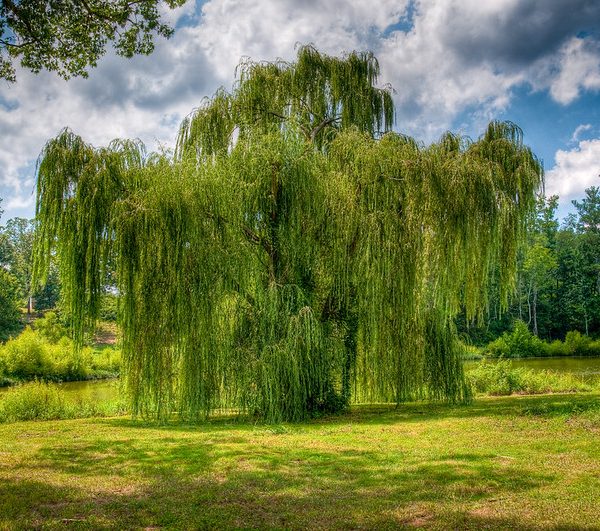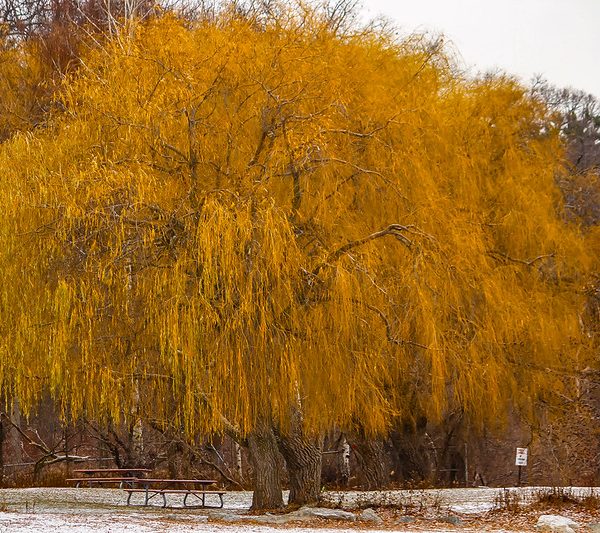Swamp White Oak
Who doesn’t admire the sight of a sturdy oak tree? The Swamp White Oak is a medium sized, moderately fast-growing Oak that grows to @ 50-60 feet tall and wide. The Swamp White Oak transplants well and is a long-lived tree: up to several hundred years as well as being a bird and pollinator favorite. It sports large, leathery, broad multi-colored leaves that are dark green on top and silvery on the bottom in summer, then turning yellow/brown and sometimes “reddish purple” in fall. Its wide, full canopy makes for an excellent shade tree or a street planting. It prefers full sun and acidic soil PH: yellowing of leaves during the summer months is a telltale sign of soils with high PH. While the Swamp White Oak thrives in lowlands near swamps and marshes in medium to wet conditions and poorly drained soils, it also tolerates clay soil and drought well.
Thornless Honey Locust
The Thornless Honey Locust is a beautiful, rapid growing shade tree that is adaptable to many soil types and displays beautiful yellow fall foliage. It provides soft shade that does not choke out grass or garden plants beneath it. Seemingly impervious to salts and pollutants, the Thornless Honey Locust does equally well in urban areas as it does in the suburbs. Though it prefers moist well drained soil, its aggressive, deep diving root system makes it highly drought resistant and driveway/sidewalk safe.
The Thornless Honey Locust produces pretty green flowers in Spring with the fragrance of honey, and when mature produce legumes (seed pods) that rabbits, squirrels and other wildlife consume.
Weeping Willow
Whose gaze doesn’t stop on the stoic, graceful Weeping Willow seen from their car window when driving by? The statuesque weeping willow can dominate a landscape and is recognized at a glance. Whether situated alone in a yard or adorning a lake or pond with its spiraling branches arching to the ground, adorned with its long, narrow bright green leaves. Adaptable to many soil types and both acidic and alkaline soils, it does prefer medium to wet conditions. It flowers in late winter or early spring on attractive yellow/green catkins.



